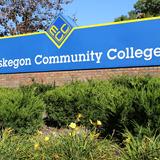- Baker College of Muskegon is nestled in western Michigan along the beautiful shoreline of Lake Michigan and its scenic sandy beaches. Students can take advantage of Muskegon Lake, Bear Lake, and Mona Lake, as well as nearby parks and recreation areas for hiking, boating, skiing, snowmobiling, and camping. The mission of Baker College is to provide quality higher education and training which enable graduates to be successful throughout challenging and rewarding careers. Baker College offers highly effective academic programs which are accessible, market-driven, career-focused, and which lead to employment and career advancement for its students.
School Highlights
Baker College of Muskegon serves 3,481 students (61% of students are full-time).
The college's student:teacher ratio of 50:1 is higher than the state community college average of 19:1.
Minority enrollment is 14% of the student body (majority Black), which is less than the state average of 40%.
Quick Stats (2025)
- Enrollment: 3,481 students
- Private-state tuition: $8,280
- Student:teacher ratio: 50:1
- Minority enrollment: 14%
- Source: Integrated Postsecondary Education Data System (IPEDS)
Top Rankings
Baker College of Muskegon ranks among the top 20% of public schools in Michigan for:
Category
Attribute
School Resources
School Overview
The teacher population of 70 teachers has stayed relatively flat over five years.
Baker College of Muskegon
(MI) Community College Avg.
Carnegie Classification
Baccalaureate / Associates Colleges
Baccalaureate/Associate's Colleges: Associate's Dominant
Institution Level
Four or more years
At least 2 but less than 4 years
Institution Control
Private, non-profit
Public
Total Faculty
70 staff
224 staff
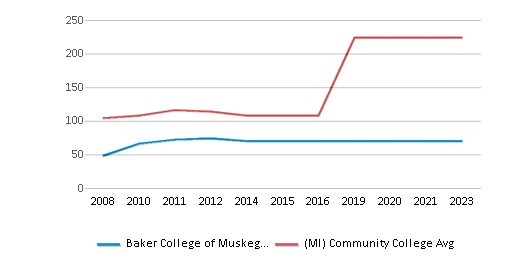
School Calendar
Student Body
The student population of Baker College of Muskegon has stayed relatively flat over five years.
The student:teacher ratio of 50:1 has stayed the same over five years.
The Baker College of Muskegon diversity score of 0.25 is less than the state average of 0.60. The school's diversity has stayed relatively flat over five years.
Total Enrollment
3,481 students
2,154 students
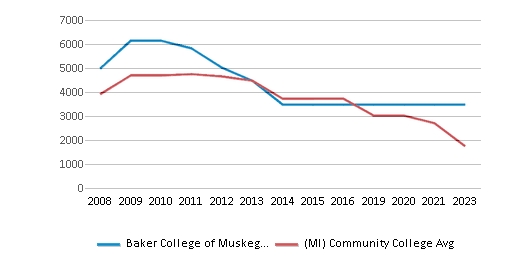
Student : Teacher Ratio
50:1
19:1
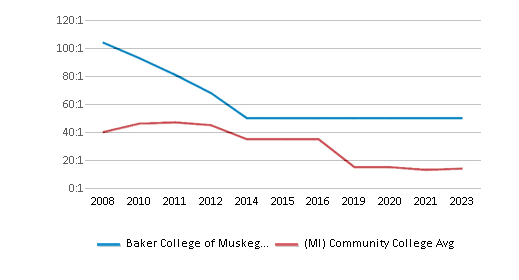
# Full-Time Students
2,133 students
878 students
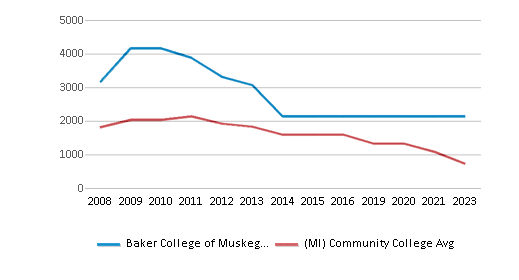
# Part-Time Students
1,348 students
1,714 students
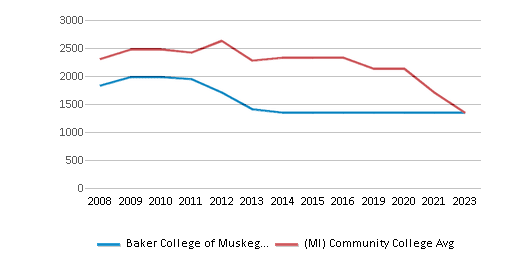
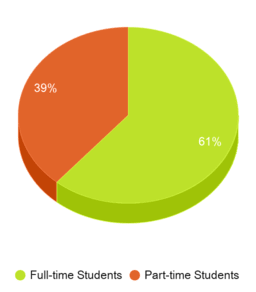
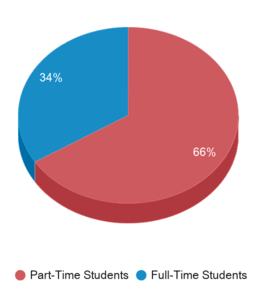
# Enrollment Undergraduate
284 students
225 students
# Full-Time Undergraduate Students
2,130 students
889 students
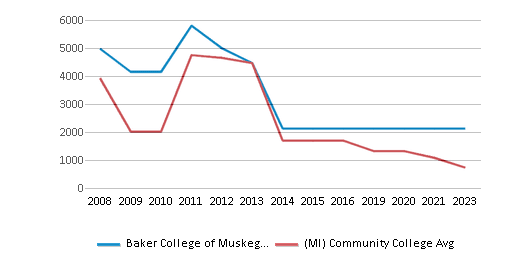
# Full-Time Graduate Students
3 students
4 students
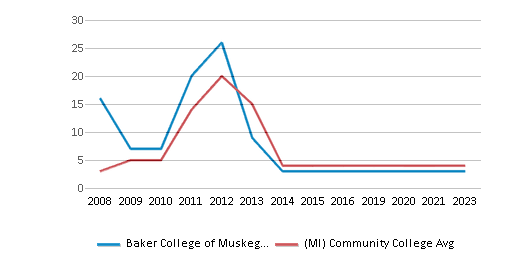
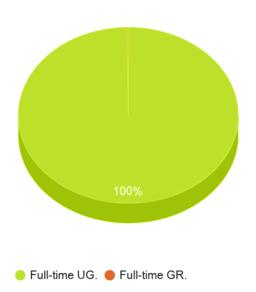
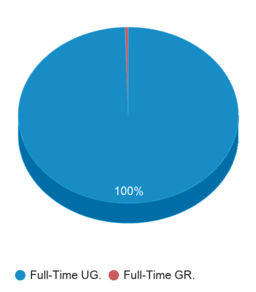
# Part-Time Undergraduate Students
1,338 students
1,714 students
# Part-Time Graduate Students
10 students
4 students
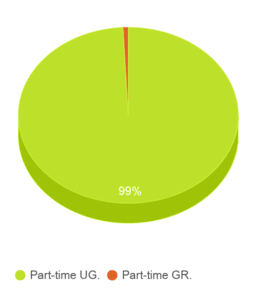
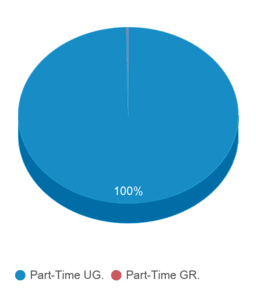
Total Dormitory Capacity
749 students
178 students
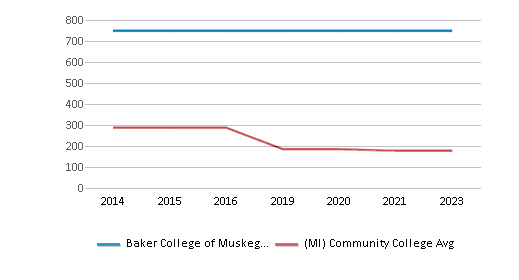
% American Indian/Alaskan
n/a
n/a
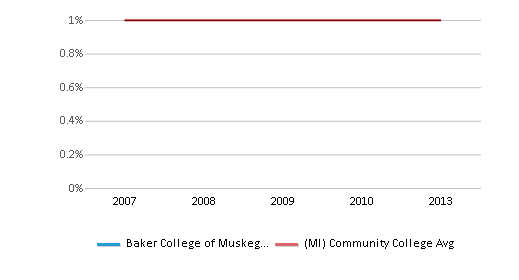
% Asian
1%
4%
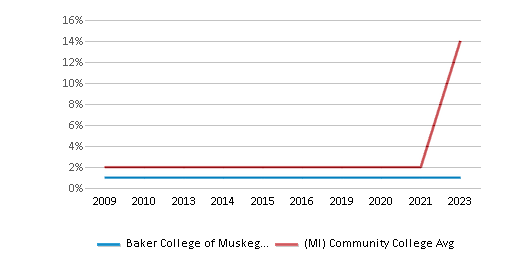
% Hispanic
5%
7%
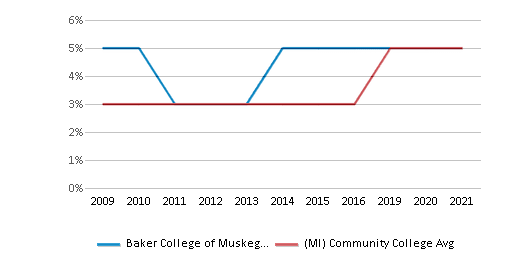
% Black
8%
16%
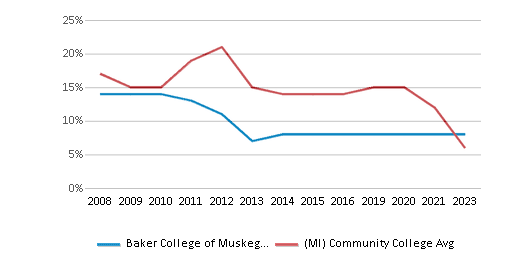
% White
86%
60%

% Hawaiian
n/a
1%
% Two or more races
n/a
4%
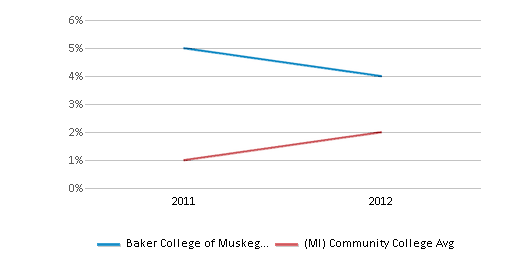
% Non Resident races
n/a
2%
% Unknown races
n/a
6%
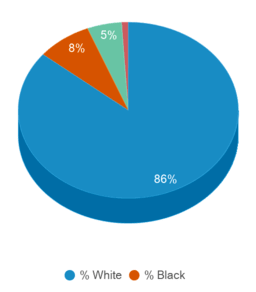
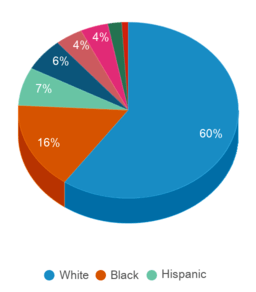
Diversity Score
0.25
0.60
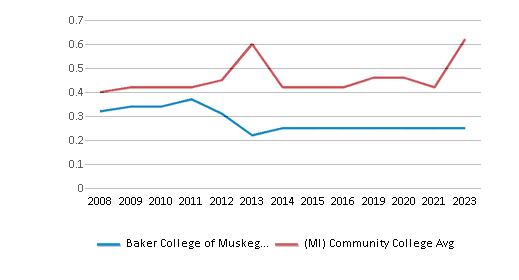
College Completion Rate (Students who graduate in less than 4 years)
n/a
0.2881%
College Completion Rate (Students who graduate in 4 years or more than 4 years)
n/a
0.2071%
Average Graduate Earnings (10 Years)
$30,600
$30,700
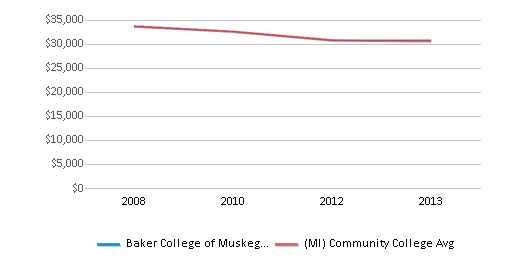
Tuition and Acceptance Rate
The private state tuition of $8,280 is less than the state average of $11,103. The private state tuition has grown by 9% over four years.
Private State Tuition Fees
$8,280
$11,103

% Students Receiving Some Financial Aid
96%
89%
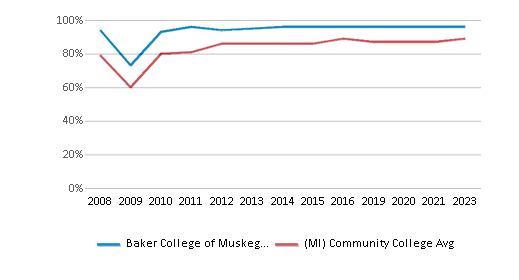
Median Debt for Graduates
$24,000
$12,000
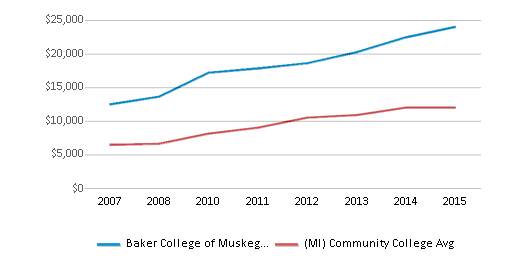
Median Debt for Dropouts
$8,485
$5,500
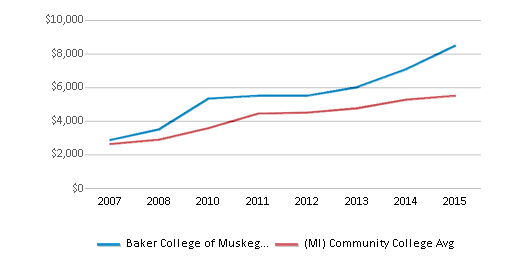
Acceptance Rate
n/a
98%
Source: 2023 (or latest year available) Integrated Postsecondary Education Data System (IPEDS)
Frequently Asked Questions
How much does Baker College of Muskegon cost?
Baker College of Muskegon's private state tuition is approximately $8,280.
What schools are Baker College of Muskegon often compared to?
Baker College of Muskegonis often viewed alongside schools like Grand Rapids Community College, Muskegon Community College by visitors of our site.
What is Baker College of Muskegon's ranking?
Baker College of Muskegon ranks among the top 20% of community college in Michigan for: Percent of students receiving financial aid.
Recent Articles

Obtaining Your Bachelor's Degree at a Community College
Explore the evolving landscape of community colleges offering bachelor's degrees, addressing affordability, accessibility, and workforce needs.

A to Z of Community College Certificates and Courses
From business and healthcare to technology and skilled trades, the article showcases the breadth of options available to students seeking to enhance their knowledge, develop new skills, or pursue career advancement.

What is a Community College?
This comprehensive guide explains what a community college is, its history, and its role in higher education. It covers the types of programs offered, differences from four-year colleges, benefits of attending, and important considerations for prospective students, providing valuable insights for those exploring educational options.

